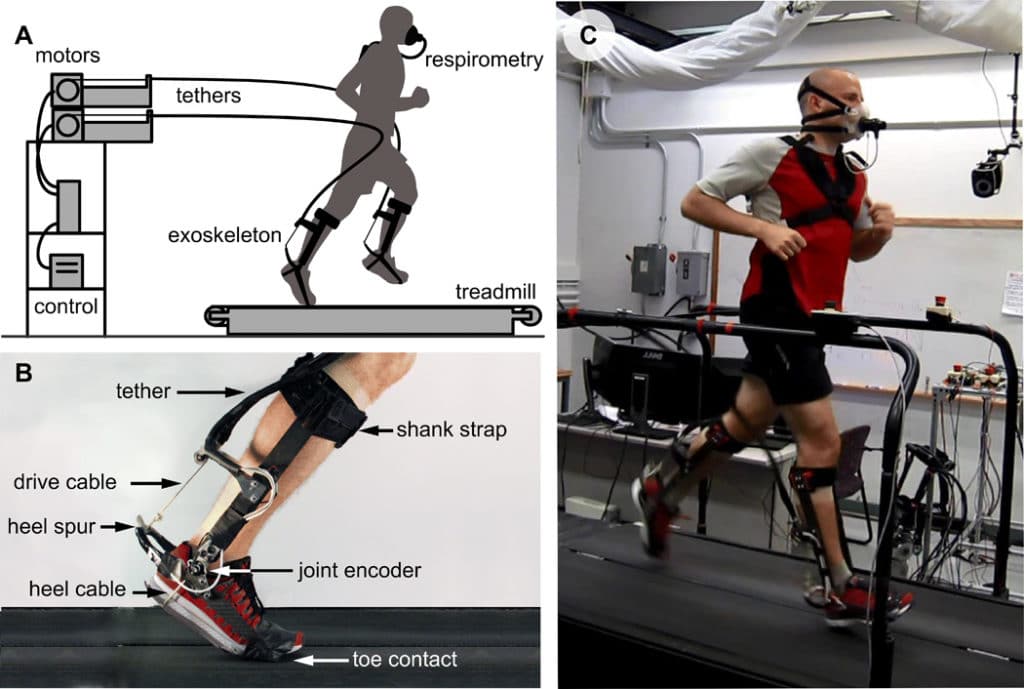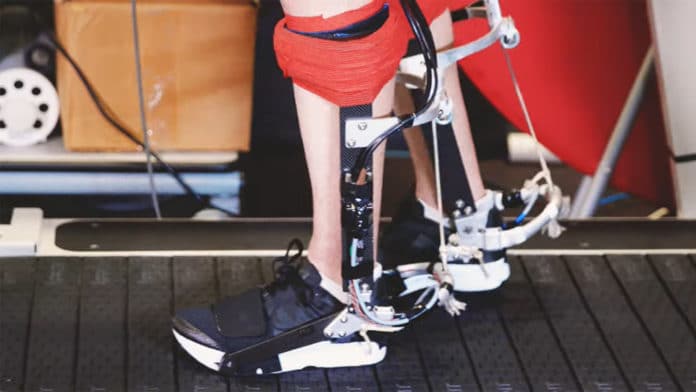Exoskeletons – robotic wearable technologies that increase our physical capabilities – are slowly leaving the world of comics to become a reality. A number of exoskeletons are being developed for military purposes, for patients who have suffered a stroke, or for industrial workers to prevent them from the strain. Stanford University engineers think that in addition to boosting physical activity, the ankle exoskeletons could even be served as a new mode of transportation.
In this hope, the team has developed a motor-powered exoskeleton – that attaches around the ankle and foot of the person – could make running easier, faster, and longer. The researchers investigated two different modes of running assistance: motor-powered assistance and spring-based assistance. In experiments, the researchers found that powered by a motor, the exoskeleton drastically reduced the energy cost of running, making it 15% easier than running without the exoskeleton.
On the other hand, when the exoskeleton was powered to mimic a spring, they found that it made it 11% harder than running exoskeleton-free and only 2% easier than the non-powered exoskeleton.

The frame of the ankle exoskeleton attaches to the shoe with a rope looped under the heel and a carbon fiber bar inserted into the sole, near the toe. The motor is located behind the treadmill that produces the two modes of assistance.
The spring-like mode mimics the influence of a spring running parallel to the calf. It stores energy during the beginning of the step and unloads that energy as the toes push off. And in the powered mode, the motors tug a cable running through the back of the exoskeleton from the heel to the calf. It pulls the foot upward during toe-off to help extend the ankle at the end of a running step.
“Powered assistance took off a lot of the energy burden of the calf muscles. It was very springy and very bouncy compared to normal running,” said Delaney Miller, a graduate student at Stanford who is working on these exoskeletons and also helping test the devices. “Speaking from experience, that feels really good. When the device is providing that assistance, you feel like you could run forever.”
Besides, the researcher’s observation indicated that a runner using the powered exoskeleton could boost their speed by as much as 10%. They also think this kind of technology could help people in various ways by providing physical support, confidence, and possibly increased speed.
“You can almost think of it as a mode of transportation,” said Guan Rong Tan, a graduate student in mechanical engineering who is continuing this research. “You could get off a bus, slap on an exoskeleton, and cover the last one-to-two miles to work in five minutes without breaking a sweat.“
Currently, it is a big bulky machine that can be used only on a treadmill in the lab. However, when the expected results are gained, the team thinks it should be possible to turn the powered skeleton into an effective untethered device.
Journal Reference:
- Improving the energy economy of human running with powered and unpowered ankle exoskeleton assistance. DOI: 10.1126/scirobotics.aay9108
